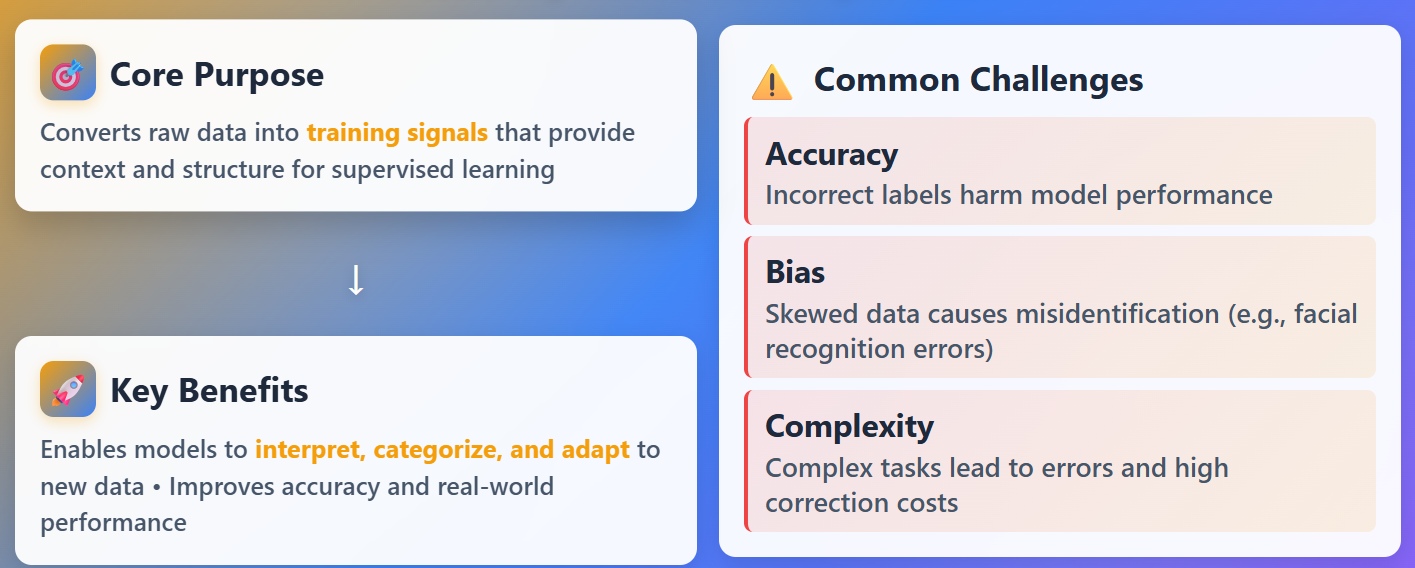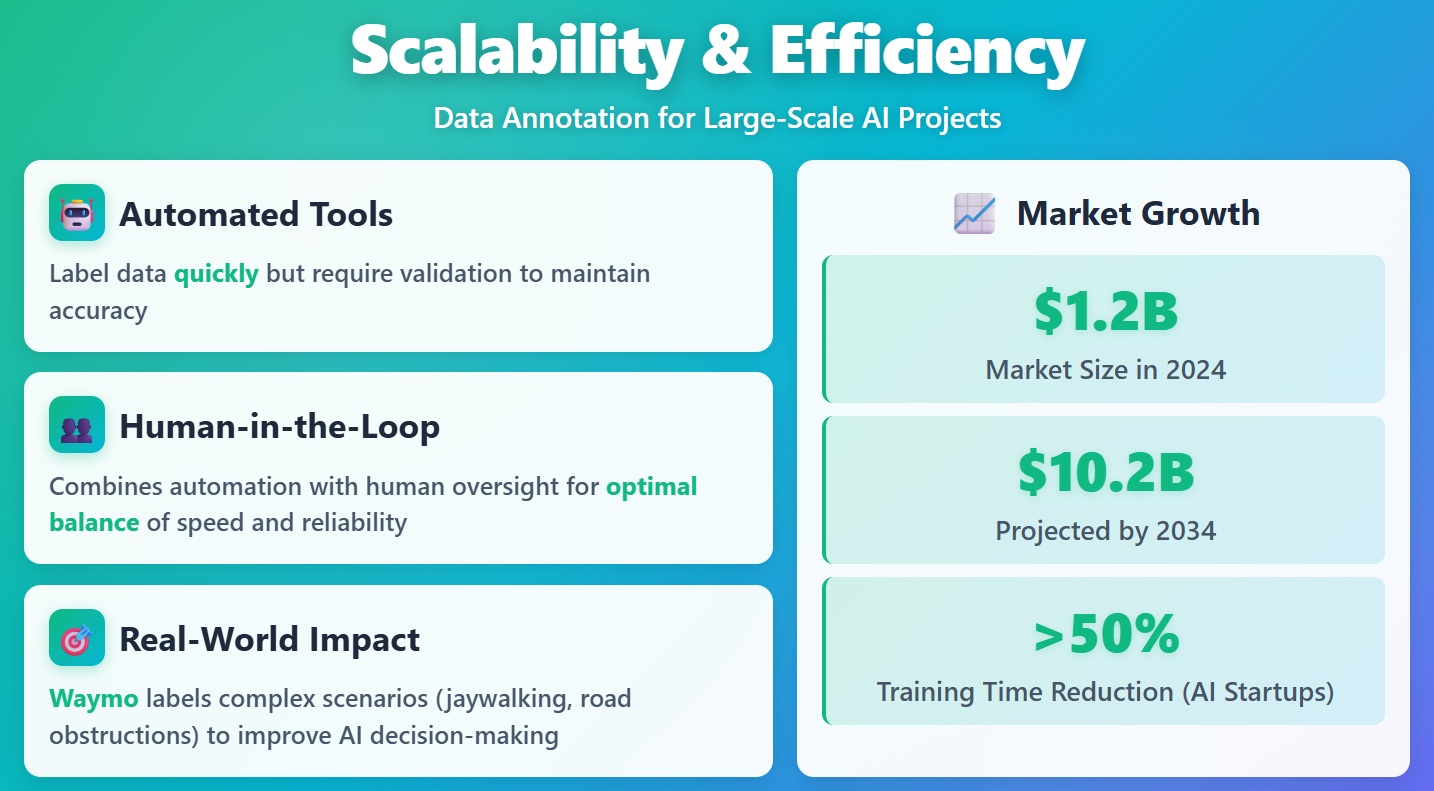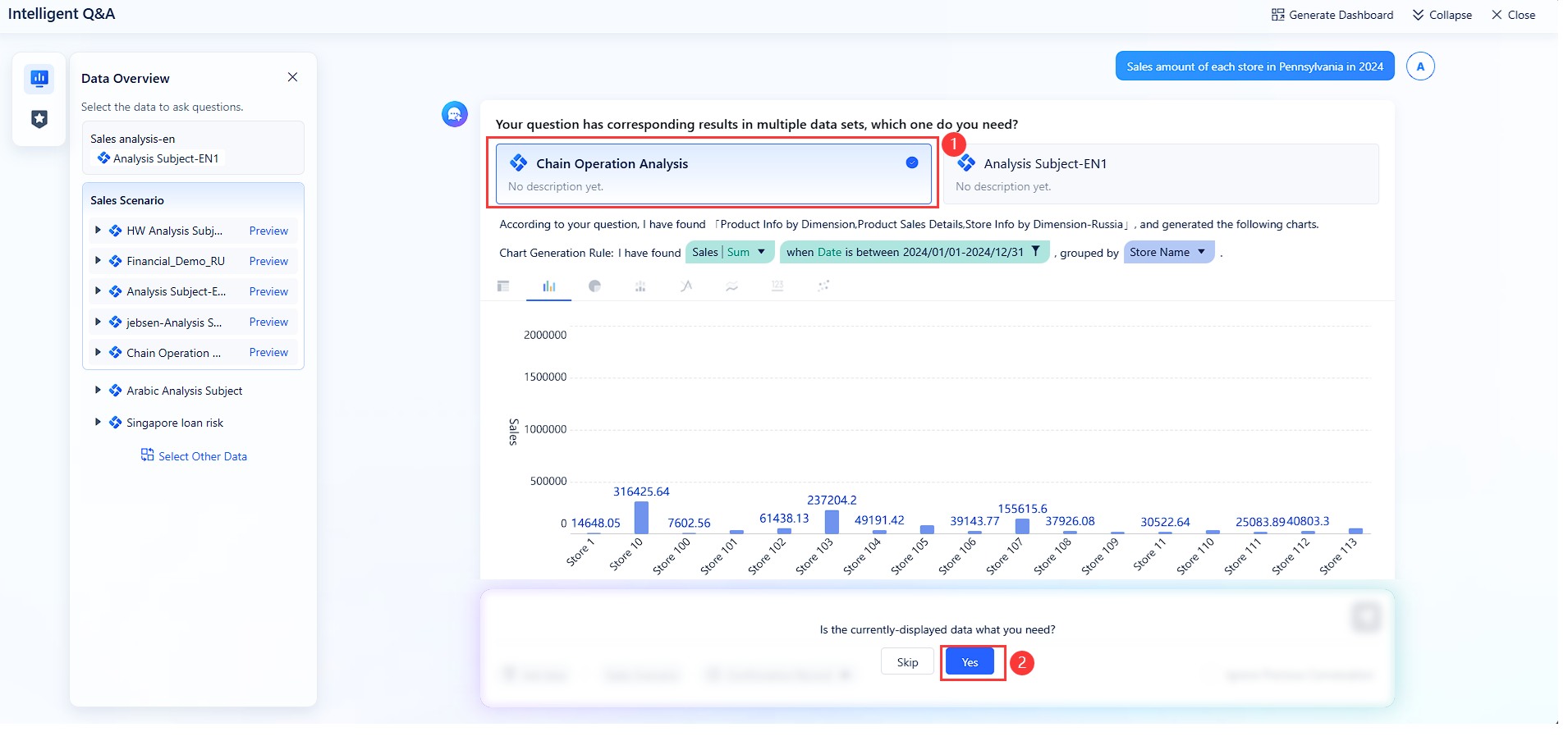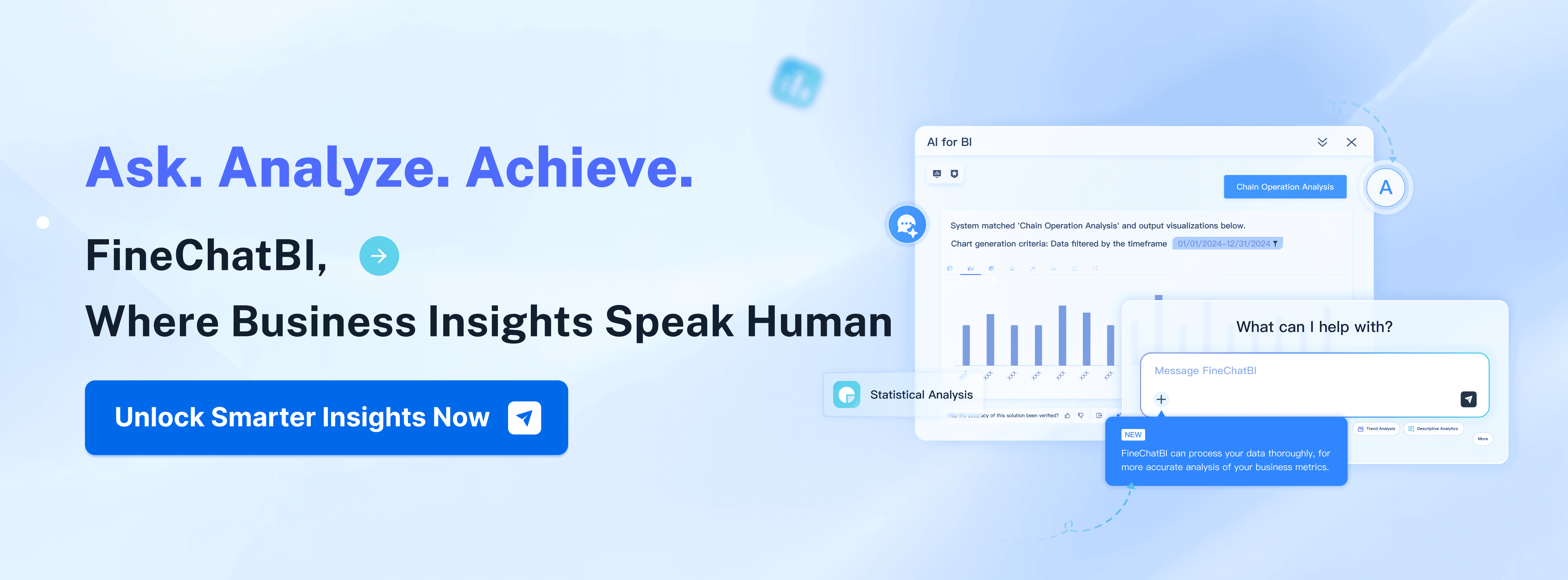AI data annotation services transform raw data into valuable resources for training AI and machine learning models. You need data annotation to build accurate and reliable models. When you use high-quality data annotation, you improve model performance and business intelligence across industries. Nearly 80% of AI project inefficiencies come from improperly annotated data. Professional services usually reach accuracy rates of 95–99%, while internal teams only achieve 85–90%. Proper data annotation matters most in fields like autonomous vehicles and medical diagnostics, where errors can have serious consequences. As digital transformation accelerates, professional data annotation services and advanced tools drive ai data innovations and help you make smarter decisions.
- Nearly 80% of AI project inefficiencies stem from improperly annotated data.
- Professional annotation services can achieve accuracy rates of 95–99%, compared to 85–90% for internal teams.
- Proper data annotation is essential for applications like autonomous vehicles and medical diagnostics, where misannotations can lead to serious errors.
Data Annotations in AI Projects

What Is Data Annotations
You encounter data annotation every time you use AI-powered tools. Data annotation is the process of tagging raw data with relevant information or metadata. You make data understandable for machine learning algorithms by labeling it. This step is crucial because AI models need clear instructions to learn from data. When you annotate data, you add context and meaning, transforming it from random information into valuable training material.
Data annotation covers many types of data. You might work with images, videos, text, audio, or even complex semantic information. Each type requires a different approach. The table below shows the most common types of data annotation used in AI projects across industries:
| Type of Annotation | Description | Techniques |
|---|---|---|
| Image Annotation | Labeling images to help models understand visual content. | Object Detection, Image Segmentation |
| Video Annotation | Labeling moving objects frame-by-frame to understand motion. | Object Tracking, Action Recognition, Frame Classification |
| Text Annotation | Preparing unstructured language data for NLP tasks. | Named Entity Recognition, Sentiment Annotation, Intent Annotation, Part-of-Speech Tagging |
| Semantic Annotation | Adding contextual meaning to data for complex tasks. | Ontology-based Tagging, Scene Labeling, Relationship Annotation |
| Audio Annotation | Labeling audio data for speech recognition or sound classification. | Speech Transcription, Speaker Diarization, Sound Event Tagging, Emotion Annotation |
You use data annotation to create annotated datasets. These datasets serve as the foundation for AI and machine learning projects. Without proper data annotation, your models cannot learn effectively.
Tip: High-quality data annotation ensures that your AI models receive the right signals during training. You reduce errors and improve reliability by focusing on accuracy.
Role in AI Model Training
You rely on annotated datasets to train AI models. Data annotation converts raw data into meaningful training signals. You guide the learning algorithm by providing context and structure. High-quality annotations act as the ground truth for supervised learning. You help the model identify features, optimize its settings, and improve predictive performance.
When you use annotated datasets, you enable your AI models to interpret and categorize new data. You make it possible for models to adapt to different scenarios. For example, you might label customer chat transcripts for sentiment analysis. Your AI can then classify future interactions as positive, negative, or neutral. You also use data annotation to transfer knowledge between domains. An AI model trained to detect road signs in one country can learn to recognize signs in another country with new annotated datasets.
You face challenges if your data annotation is poor. The table below highlights some common issues:
| Challenge | Description |
|---|---|
| Accuracy | Ensuring the data is correctly labeled is crucial for model performance. |
| Bias | Avoiding bias in data annotation is essential to prevent skewed outcomes. |
| Complexity | Handling complex tasks in annotation can lead to errors and inefficiencies. |
- Poor data quality can lead to AI project failures.
- Biased training data can result in models that misidentify or misclassify.
- High costs associated with correcting annotation errors can drain resources.

Research shows that biased or incomplete data can cause AI models to amplify existing societal biases. For instance, facial recognition systems sometimes misidentify individuals from minority groups. You must ensure your data annotation is accurate and representative to avoid these problems.
You improve model accuracy by using high-quality annotated datasets. You enable supervised learning, which helps your models understand relationships between inputs and outputs. You enhance adaptability, allowing your models to perform well in real-world situations. You also support better decision-making in critical applications, such as healthcare and autonomous vehicles. Continuous updates to your annotated datasets keep your models current and effective.
You see the impact of data annotation in many industries. Generative AI uses annotated data to simulate driving scenarios for autonomous vehicles. Companies like Waymo train self-driving cars with annotated video and sensor data. You ensure that vehicles learn to navigate complex environments safely. In customer support, you label chat transcripts so AI can respond appropriately to different customer moods. You also prepare medical data for NLP models, helping them understand patient records in multiple languages.
Note: You cannot build reliable AI models without proper data annotation. You must invest in creating accurate annotated datasets to achieve the best results.
Types of Data Annotation Tools and Methods

Text, Image, Video, and Audio Annotation
You use different data annotation tools to prepare data for AI projects. Each tool specializes in handling specific types of data. You can see how these tools work in the table below:
| Data Type | Techniques | Use Cases |
|---|---|---|
| Text | Entity Recognition, Sentiment Annotation, Intent Annotation, Linguistic Annotation | Customer Service, Healthcare, Finance |
| Image | Bounding Boxes, Semantic Segmentation, Polygons and Points, 3D Annotation | Autonomous Vehicles, Retail, Healthcare |
| Video | Object Tracking, Action Labeling, Scene Segmentation, Pose Estimation | Autonomous Driving, Sports Analytics, Security |
| Audio | Speech-to-Text, Speaker Diarization, Sound Event Labeling, Emotion Annotation | Voice Assistants, Customer Support, Media & Entertainment |
You train AI to understand language, images, video, and audio by using these annotation tools. Text annotation helps AI detect intent and respond to customers. Image and video annotation allow computer vision models to interpret visual data. Audio annotation is critical for voice-enabled systems.
Tip: You improve AI applications like chatbots, autonomous vehicles, and virtual assistants by using the right data annotation tools for each data type.
Human-in-the-Loop and Automation
You choose between manual, semi-automated, and automated annotation methods based on your project needs. Manual annotation gives you high accuracy but takes more time. Semi-automated methods speed up the process but may need more checks. Automated annotation handles large datasets quickly, but you must validate results to avoid errors.
| Annotation Method | Efficiency | Accuracy |
|---|---|---|
| Manual | Time-consuming | High (depends on experience) |
| Semi-automated | Faster than manual | Moderate (varies) |
| Automated | Very fast | Variable (requires validation) |
You see that automated annotation increases efficiency by up to 60%. However, complex data often needs human oversight. Human-in-the-loop approaches reduce error rates and improve reliability, but they scale less easily than automated methods.
FanRuan and FineChatBI in Annotation Solutions
You benefit from advanced annotation solutions like FanRuan and FineChatBI. FanRuan provides scalable data integration and management, supporting high-quality annotation for large projects. FineChatBI uses conversational AI to help you annotate and analyze text data efficiently. You can interact with data using natural language, making annotation faster and more accurate. These solutions offer features such as AI-assisted labeling, collaboration tools, and integration with machine learning pipelines. You protect sensitive data and ensure compliance with security standards.

Note: You achieve better results by choosing annotation tools that match your data type and workflow. FanRuan and FineChatBI help you scale your annotation projects and maintain high data quality.
Importance of High-Quality Annotation
Accuracy and Consistency
You need high-quality annotation to build reliable AI models. When you focus on accuracy and consistency in the annotation process, you minimize errors and reduce bias in your training data. You ensure that your AI learns from true patterns instead of mistakes. Human annotators play a key role in understanding context, nuance, and fairness. Machines often miss sarcasm or cultural details, but people can spot and correct these issues. You rely on human judgment to create quality data that supports fair and trustworthy AI outcomes.
- High-quality annotation reduces bias and errors in training data.
- Poor annotation can introduce systematic mistakes, leading to unreliable models.
- Accurate and diverse annotation fosters fairness and reliability in AI applications.
- Human annotators understand context and can correct biases that machines overlook.
- You need human insight to interpret sarcasm and cultural nuances in text.
You measure annotation quality using metrics like Inter-Annotator Agreement (IAA), Cohen’s Kappa, and Fleiss’ Kappa. These tools help you check if different annotators agree on labels, which shows consistency. You aim for an IAA above 0.8 to ensure strong agreement and high-quality data. The table below shows how these metrics support reliable AI model performance:
| Metric | Description | Importance in AI Model Performance |
|---|---|---|
| Inter-Annotator Agreement (IAA) | Measures the consistency between different annotators on the same data. | High IAA indicates reliable annotations that reflect true data patterns, enhancing model accuracy. |
| Cohen’s Kappa | A statistical measure of inter-rater agreement for categorical items. | A higher Kappa value signifies better agreement among annotators, crucial for quality assurance. |
| Fleiss’ Kappa | An extension of Cohen’s Kappa for multiple annotators. | Ensures that multiple annotators are aligned, which is vital for complex datasets. |
| F1 Score | A measure of a test's accuracy that considers both precision and recall. | Balances false positives and false negatives, important for evaluating model performance. |
You see that annotation quality directly affects AI outcomes. When you use consistent and accurate annotation, you build models that perform well in real-world scenarios.
Scalability and Efficiency
You face challenges when you scale the annotation process for large AI projects. You need efficient methods to handle massive amounts of data without losing quality. Automated annotation tools help you label data quickly, but you must validate results to maintain accuracy. Human-in-the-loop systems combine automation with human oversight, giving you the best balance between speed and reliability.
You save time and resources by setting clear objectives for your annotation process. You prevent rework and reduce unnecessary iterations. AI startups have cut training time by over 50% using automated annotation, speeding up data preparation. Companies like Waymo collect huge amounts of data from cameras and sensors every day. Scalable annotation solutions allow you to label complex scenarios, such as jaywalking or road obstructions, which improves AI decision-making in real-world conditions.
- Accurate annotation improves model predictions and reduces errors during deployment.
- High-quality data eliminates noise and incorrect patterns, leading to fair and robust models.
- Efficient annotation saves time, resources, and prevents rework.

You need scalable annotation services to keep up with the growing demand for high-quality training data. The data annotation market is expected to grow from $1.2 billion in 2024 to $10.2 billion by 2034. This growth shows how important efficient and scalable annotation is for ai data innovations.
Impact on AI Data Innovations
You drive ai data innovations by investing in high-quality annotation. Quality data annotation leads to precise predictions and deeper insights. In predictive maintenance, you use annotated data to evaluate equipment conditions and estimate when repairs are needed. This improves operational readiness and reduces downtime. Industrial robots depend on quality data annotation to train computer vision models. You enable robots to recognize objects and interact safely with their environment.
Computer vision systems use annotated data to improve quality control. Machines can track errors and respond automatically, which boosts efficiency and product quality. You see the benefits of high-quality annotation in many industries, from healthcare to manufacturing. You support ai data innovations that transform business intelligence and decision-making.
Tip: You unlock new possibilities in AI by focusing on quality data annotation. You enable smarter, safer, and more reliable AI applications across industries.
You rely on annotation services to maintain high standards and support your business goals. When you use a robust annotation process, you build trust and accountability in your AI systems. You ensure that your models perform well, adapt to new challenges, and deliver value in real-world scenarios.
Choosing AI Annotation Companies
Key Criteria for Providers
You need to choose ai annotation companies that meet your project requirements. The right provider helps you achieve successful data labeling and supports your business goals. You should look for data annotation companies with strong expertise, advanced technology, and proven quality assurance. The table below shows important criteria to consider when selecting data labeling services:
| Criteria | Description |
|---|---|
| Domain Expertise | Annotators must understand your industry, such as healthcare or manufacturing. |
| Scalability and Workforce Management | Providers should handle projects of any size and adapt to changing needs. |
| Quality Assurance Protocols | Multi-layer review systems and metrics ensure high accuracy in data annotation. |
| Security and Compliance | Companies must follow standards like ISO 27001, HIPAA, and GDPR to protect your data. |
| Technology Stack and Tooling | Advanced tools and automation improve efficiency and accuracy in data labeling services. |
You should also check the provider’s track record, pricing models, and flexibility. Trusted global annotation providers offer secure and scalable solutions for enterprise projects.
Best Practices for Annotation Projects
You can improve your results by following best practices for data annotation projects. Start by defining your project clearly. Set guidelines for data collection, annotation types, and budget. Prepare a diverse dataset to avoid bias and improve model training. Select annotators with the right skills for your tasks. Choose data annotation companies that use secure and easy-to-integrate tools. Establish quality assurance processes with regular audits and metrics. Monitor and refine your dataset based on model performance.
- Define the project scope and guidelines.
- Prepare diverse data to reduce bias.
- Match annotator skills to project complexity.
- Use secure annotation tools.
- Set up quality assurance and regular audits.
- Continuously improve data quality.
You should document your processes and communicate with stakeholders to keep your project on track.
FanRuan’s Approach to Annotation Services
You benefit from FanRuan’s approach to data labeling services. FanRuan combines domain expertise, scalable technology, and robust security to deliver accurate data labeling services. You get advanced tools like FineChatBI, which support conversational data annotation and seamless integration with business intelligence systems. FanRuan’s multi-layer quality assurance ensures high accuracy and consistency. You can manage large projects with flexible workflows and real-time monitoring. FanRuan’s solutions help you achieve successful data labeling and drive innovation in your organization.

You can trust FineChatBI as one of the best ai annotation service providers. The company’s experience, technology, and commitment to quality make it a leader among data annotation companies. You gain reliable services that protect your data and support your business growth.
You unlock new possibilities when you invest in AI data annotation services. These services boost model accuracy, drive business intelligence, and spark industry innovation. The table below shows how data annotation transforms key areas:
| Impact Area | Result |
|---|---|
| Decision-Making Accuracy | You improve decisions by up to 30% with AI-powered data analytics. |
| Operational Efficiency | You streamline operations and manage risks using real-time data insights. |
| Predictive Maintenance | You uncover patterns and trends with advanced data analytics. |
| Personalized Experiences | You tailor products and services using annotated data. |
| Innovation in Business Processes | You increase innovation and adapt quickly with quality data annotation. |
- You achieve scalable and efficient AI solutions by choosing professional providers like FanRuan and FineChatBI.
- High-quality annotation tools help you handle large volumes of data and maintain accuracy.
- You prepare your organization for future trends, including multimodal annotation and ethical AI.
- Experts recommend investing in skilled data workers to enhance model quality and fairness.
- Reliable data annotation leads to faster model training and fewer issues after deployment.
You set your business up for success when you prioritize data annotation. You create smarter, safer, and more innovative AI systems.
FAQ

The Author
Lewis
Senior Data Analyst at FanRuan
Related Articles

FineChatBI vs Mercury Labs MLX Dashboard Performance in 2026
Compare FineChatBI and Mercury Labs MLX dashboard performance, speed, features, and integration to choose the best mlx dashboard for your business in 2026.
Saber
Dec 22, 2025

How Ai in Business Report is Shaping Enterprise Strategies
AI in business report reveals trends driving enterprise strategies, with rising adoption, agentic ai, and tools like FineChatBI boosting growth.
Lewis
Dec 21, 2025

What Is AI Data Analysis in 2025
AI data analysis in 2025 uses machine learning and NLP to process data, uncover patterns, and deliver fast, accurate insights for smarter decisions.
Lewis
Dec 18, 2025




